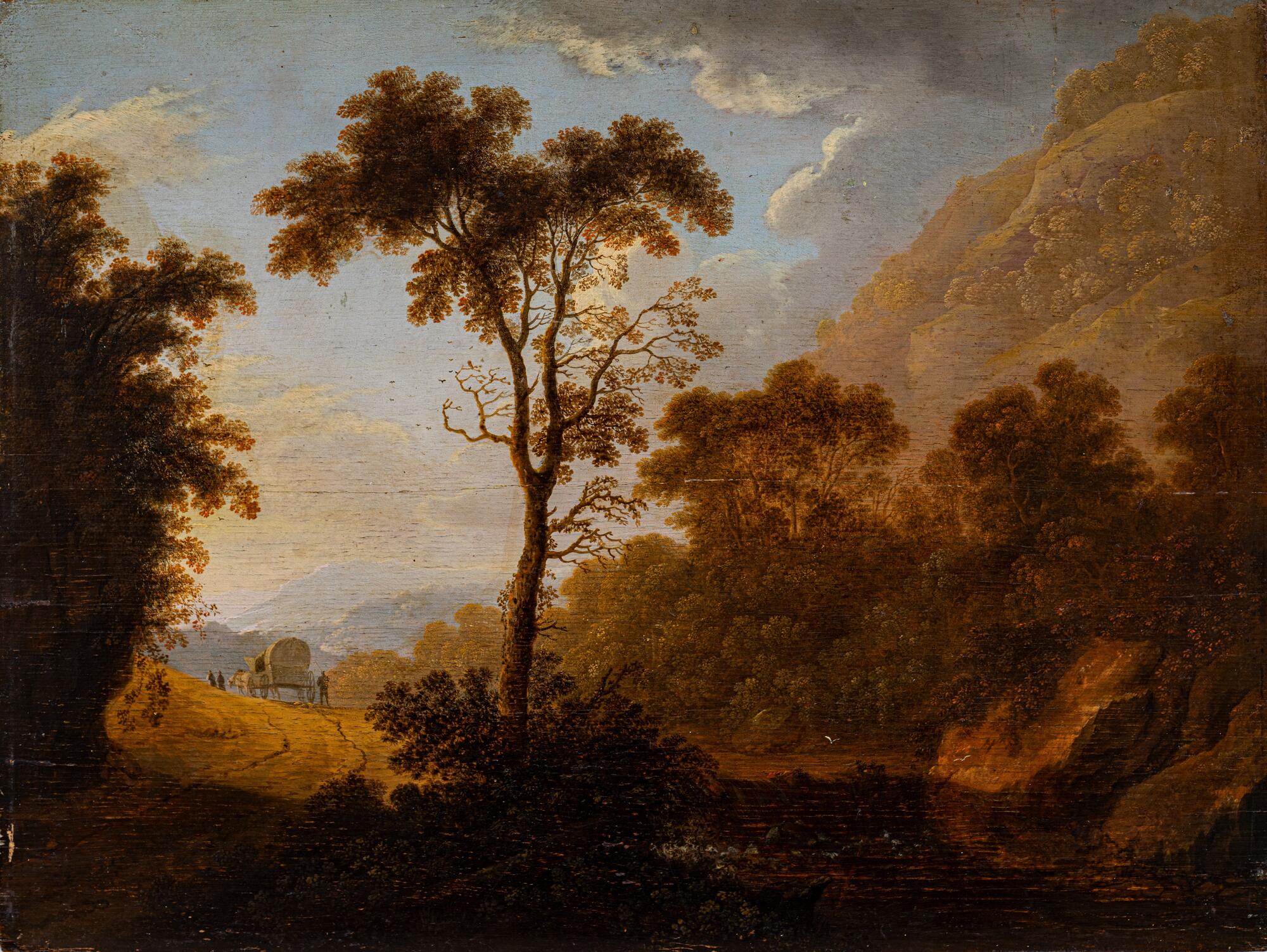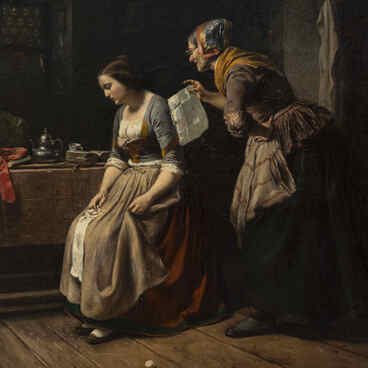Jan Both was born in the Dutch city of Utrecht in the first quarter of the 17th century into a family of glass artists. Together with his elder brother Andries, who also became a famous painter later in life, he studied drawing with his father. Afterward they were trained by Abraham Blumart, who united the Dutch and Flemish schools of painting and had a great influence on the development of art. By the mid-thirties the brothers had moved to Rome, where Jan worked on landscapes in the style of Claude Lorrain, depicting idyllic views of nature, while Andris began to paint scenes from the lives of ordinary people — bambocciade.
In 1639, Both Jr. began collaborating with other prominent artists on a project for the Buen Retiro palace in Madrid. Unfortunately, the building has not survived; it was destroyed by the advancing French army in the early 19th century.
Upon returning to Holland, the artist settled in his native Utrecht, where he continued to work on landscapes, refining his skills and approach to the subject matter. He worked together with his brother Andries and also participated in collaborations with other painters.
Jan’s paintings are compositions depicting romanticized landscapes, mostly Italian, sometimes featuring peasants, shepherds, and wayfarers as staffage characters. A distinctive feature of Both’s work is the golden coloring of the paintings. Jan preferred more sunny landscapes to the bleak views of his homeland and chose to depict the views of Italy. The artist’s paintings are flooded with soft sunlight, which is also present in “Forest Landscape”.
The sky on the canvas is in a changing state: a piercing blue high vault is obscured by gray clouds. An abundance of all kinds of ochre hues, transitions from pale pink to red and dark brown fill most of the painting. All these variations of color make it possible to feel the sun-warmed autumn day, while the whitish green of the leaves and the gray cloud crawling up to the right give rise to the foreboding of cold rain. The composition consists of three grounds: the foreground is darkened, the middle ground is brown and yellow and green, illuminated by the sun, and there is sky and blue distance in the background. The mountains on the right are an emblem of Italy. This is a characteristic example of Jan Both’s Italy-inspired landscape.
In 1639, Both Jr. began collaborating with other prominent artists on a project for the Buen Retiro palace in Madrid. Unfortunately, the building has not survived; it was destroyed by the advancing French army in the early 19th century.
Upon returning to Holland, the artist settled in his native Utrecht, where he continued to work on landscapes, refining his skills and approach to the subject matter. He worked together with his brother Andries and also participated in collaborations with other painters.
Jan’s paintings are compositions depicting romanticized landscapes, mostly Italian, sometimes featuring peasants, shepherds, and wayfarers as staffage characters. A distinctive feature of Both’s work is the golden coloring of the paintings. Jan preferred more sunny landscapes to the bleak views of his homeland and chose to depict the views of Italy. The artist’s paintings are flooded with soft sunlight, which is also present in “Forest Landscape”.
The sky on the canvas is in a changing state: a piercing blue high vault is obscured by gray clouds. An abundance of all kinds of ochre hues, transitions from pale pink to red and dark brown fill most of the painting. All these variations of color make it possible to feel the sun-warmed autumn day, while the whitish green of the leaves and the gray cloud crawling up to the right give rise to the foreboding of cold rain. The composition consists of three grounds: the foreground is darkened, the middle ground is brown and yellow and green, illuminated by the sun, and there is sky and blue distance in the background. The mountains on the right are an emblem of Italy. This is a characteristic example of Jan Both’s Italy-inspired landscape.



